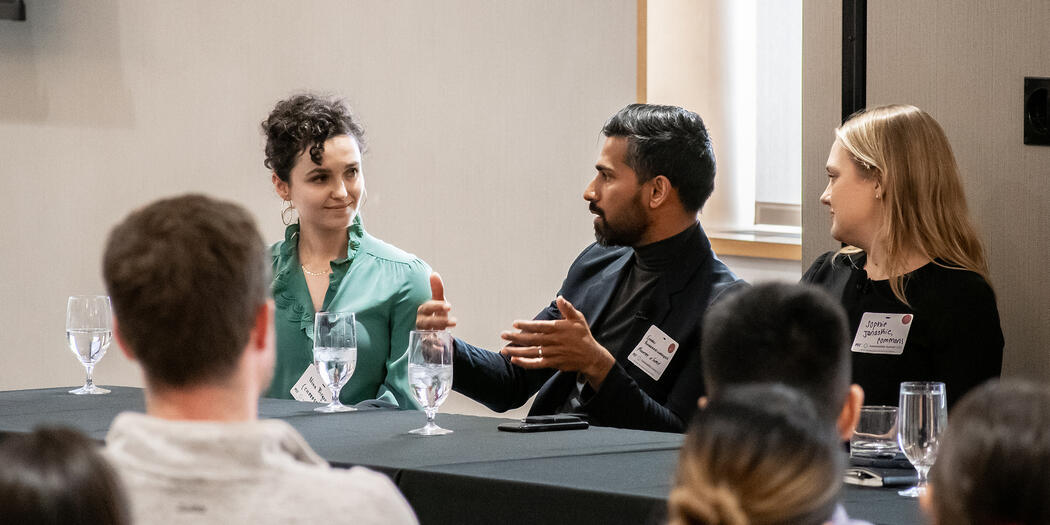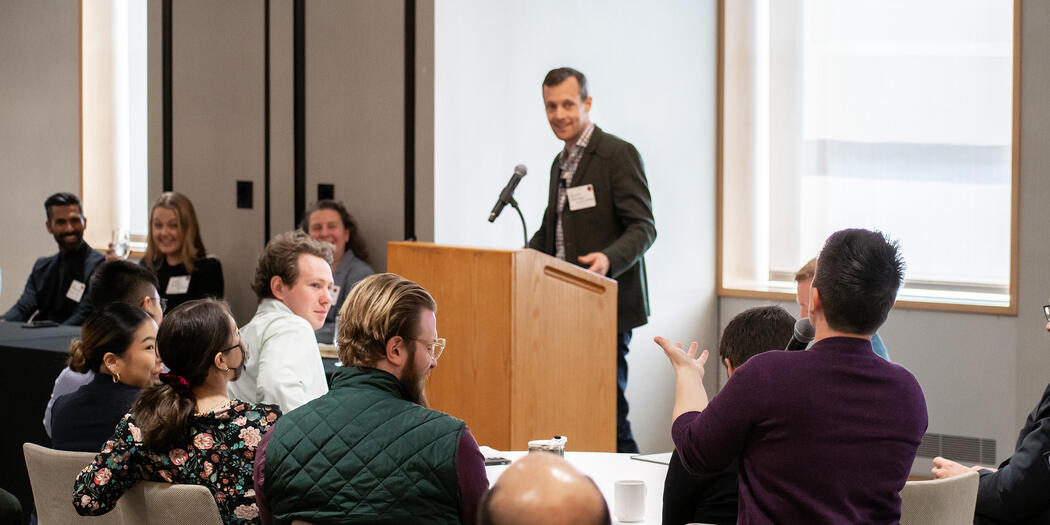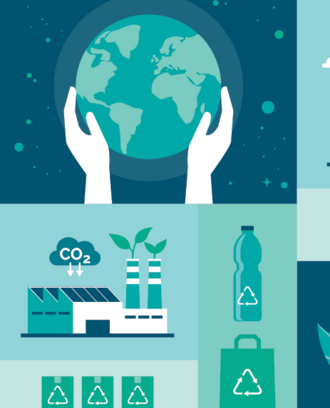At the 2023 MIT Sustainability Summit in April, back-to-back sessions tackled the subject of carbon markets from the perspective of consumers, small companies, and big corporations.
The Summit featured discussions of individual and organizational efforts to make impacts and change norms, and whether single actors or bigger groups would have a greater effect.
Yet it was a question asked by “Consumer Demand Decisions” moderator Austin Whitman, CEO of Climate Neutral, and the ensuing discussion, that provided the most clarity and the greatest sense of urgency.
Nina Birger, MBA ’17, and Gihan Amarasiriwardena, SB ’11, participate in the “Consumer Demand Decisions” panel at the 2023 MIT Sustainability Summit.
Credit: Maddie Segovia
All of it at once
“We have seen decades in modern environmental consciousness, of people being told to reduce, reuse, and recycle,” said Whitman, “but can anybody here show evidence that this has made a significant impact on climate change?”
“And,” he continued, “do companies have a responsibility to change norms in society?”
“We need all of it all at once. It’s that urgent,” said Nina Birger, MBA ’17, Vice President of Climate Solutions at CHOOOSE.
Gihan Amarasiriwardena, SB ’11, President of Ministry of Supply, which he co-founded with CEO Aman Advani and Kit Hickey, MBA ’18 (Senior Lecturer), echoed Birger and their fellow panelists’ responses to Whitman’s questions.
“There’s an interesting relationship between the super consumer who’s advocating for low-carbon products and experiences and pulling brands and companies along so that they offer better services, and the middle consumer who is considering their options but doesn’t know what their options are,” said Amarasiriwardena.
“The super consumer makes it more accessible for the middle customer because there’s a push and pull to create more offerings,” he continued. “So, how do we, as businesses, get across this chasm to a wider market by creating those offerings?”
Birger agreed, adding that companies should give consumers and their employees the ability to act, advocate for policy, and be informed.
“We need it all,” she said. “If we’re waiting for the perfect pathway to decarbonization for all of society, we might never get there.”
“Consumer Demand Decisions” moderator Austin Whitman and panelists take a question from the audience.
Credit: Maddie Segovia
A positive feedback loop
By way of example, Birger pointed to CHOOOSE, which provides businesses like airlines, travel agencies, and carbon removal services with a platform to empower their customers—through high-precision emissions calculations—to make carbon-informed decisions. The platform then gives end users the ability to act on their decisions by addressing whatever carbon footprint their activities generate with verified offsets.
Though designed for businesses, CHOOOSE enables both corporations and consumers to make decisions and act on those decisions in concert. Or, as Birger explained, everyone participates in the same cycle. What businesses and their customers do affects one another.
“It creates a very positive feedback loop in that you have the super users who are helping the companies to build the business case for making these low carbon solutions and options easier and more accessible because they’re desirable,” said Birger. “Companies go ahead and do that, then it appeals more to the middle crowd and keeps on going.”
In response, Whitman wondered if companies taking voluntary actions to pursue carbon offsetting would stick to these environmental strategies if they could not demonstrate an acceptable return on investment.
How these companies and the market respond cannot be predicted with absolute certainty, though as Amarasiriwardena noted, the falling cost of some green technologies—like solar panels—offers a positive possibility.
“Consumer demand and government subsidies accelerated this technology, so we need to look at the horizon of these products and ask where they are now and where are they going to be in five years,” he said. “We can design and build products around that because they can be cost competitive, which makes it not just a moral choice but an economic choice as well.”
As these technologies advance and become more affordable, however, companies must also make them more accessible and understandable so that everyone—and not just super consumers—will be able to use them.
“There is education that needs to happen, and then you have to meet those consumers where they are,” said Birger. “I don’t think there is one magic recipe or secret sauce, but transparency is the basis of getting customers to understand what you’re doing. If you’re transparent about what you’re doing, then they will be more educated and better understand what you’re doing and what they can do.”





